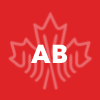
Para nordic skiing programs
Para nordic skiing includes both cross-country skiing and biathlon for athletes with a physical impairment.
“Para” comes from the Greek meaning “beside” or “alongside.” The current use of the term comes from the Paralympics, which indicates the Games are parallel to the Olympics.
Nordiq Canada works with Divisions and clubs to develop programs and coaches for Para nordic skiers. The best athletes are prepared to compete at FIS and IBU Para World Cups and the Paralympic Games.
Development
Para nordic programs are delivered through ski clubs across the country following Nordiq Canada’s Long-Term Athlete Development [LTAD] model. Contact your local club to learn more.
Need help including Para nordic participants and athletes in your club program? Look for the Starter Guide: Club Para Nordic Programs in the Document Centre and contact your Division.
International Competition
Para nordic skiing is organized and governed by FIS Féderation Internationale de Ski et de Snowboard / International Ski and Snowboard Federation (FIS) and the International Biathlon Union (IBU) .
Canada follows FIS and IBU rules and regulations. FIS is the governing body for all. cross-country skiing and IBU is the governing body for all biathlon events.
FIS and IBU define all Para sport as being for those with a primary impairment that belongs to one of 10 eligible impairment types.
Classification
The classification system levels the competitive playing field for athletes with physical disabilities. It minimizes the impact of disability on the outcome of competition, so athletes succeed based on their sporting ability. Athletes are evaluated and grouped into sport classes defined by the degree of function presented by their disability.
The International Paralympic Committee (IPC) and FIS regulate classification for Para sport using a set of rules called the IPC Classification Code. Nordiq Canada also has its own classification policy to guide our domestic classification system.
Para nordic skiing (cross-country and biathlon) is divided into three categories, each with several sport classes. In competition, each category is run as a separate medal event.
- Standing LW 2-9
- Sitting LW 10-12
- Visually impaired NS 1-3
Codes identify the athlete’s competitive category.
- LW (Locomotion Winter) refers to winter athletes with a locomotive disability
- NS (Blind) refers to athletes who are visually impaired.
The competition results are based on a factored time (percentage) formula for each classification, in each category, to create an equitable competition.
Para Nordic Guides
We are always searching for guides for visually impaired athletes competing in national and international Para nordic events.
If this opportunity is of interest contact for more information.
Para Nordic Resources
Look for Para nordic resources in the Document Centre.
















